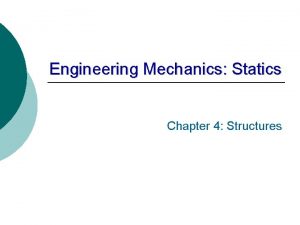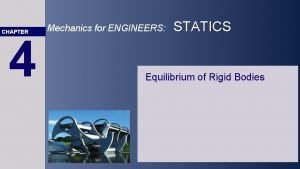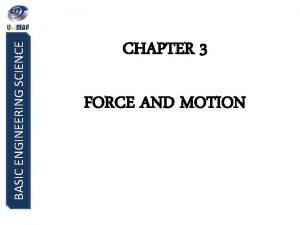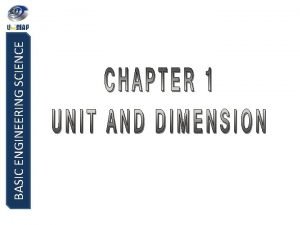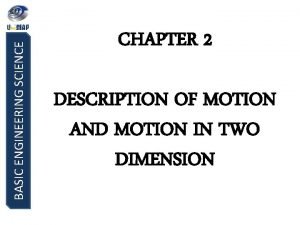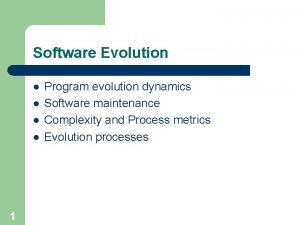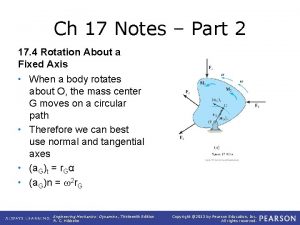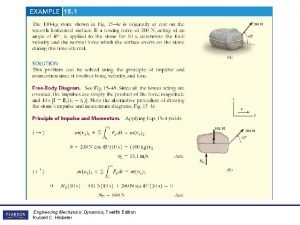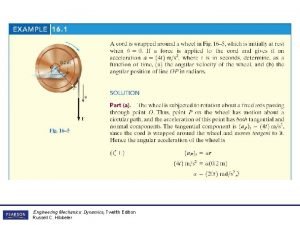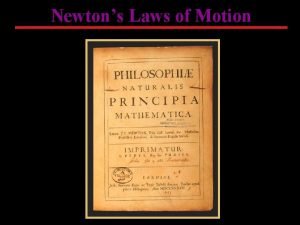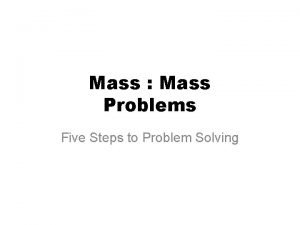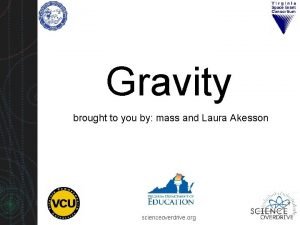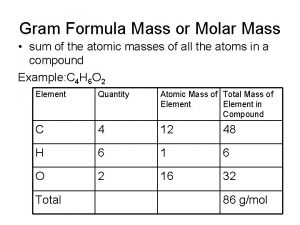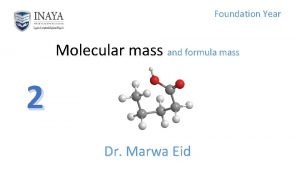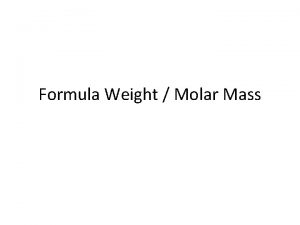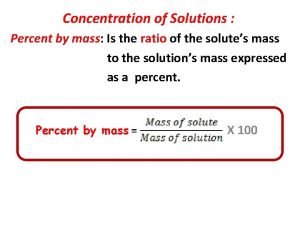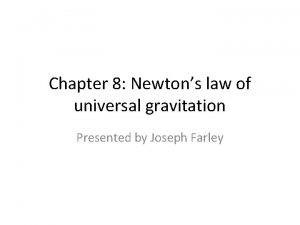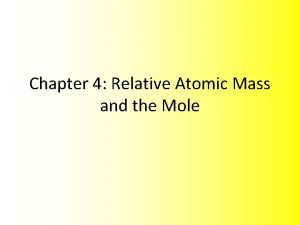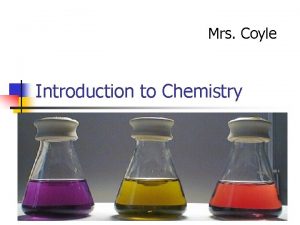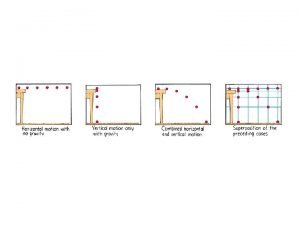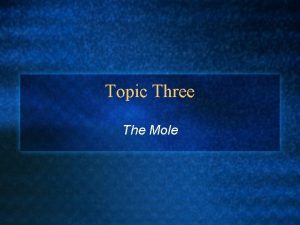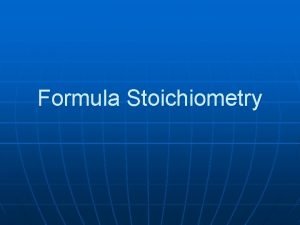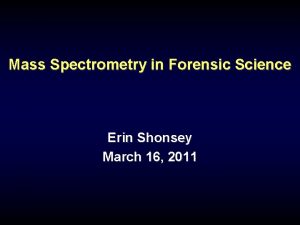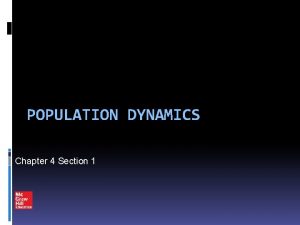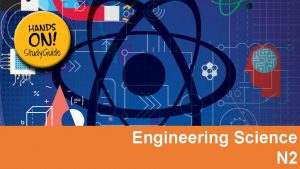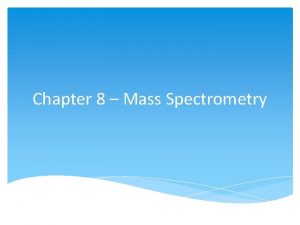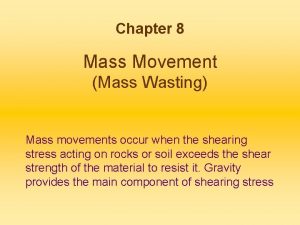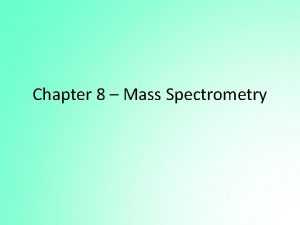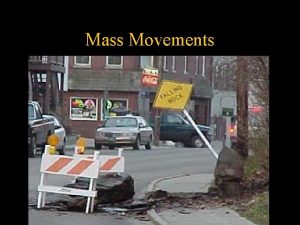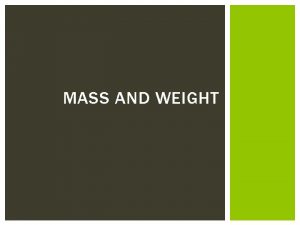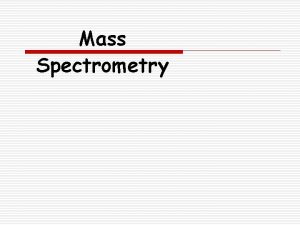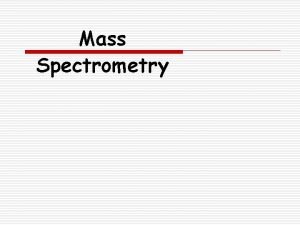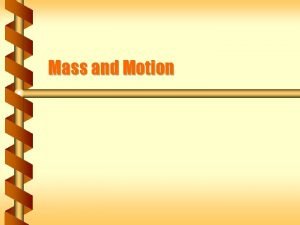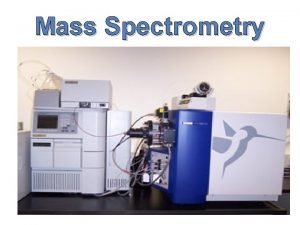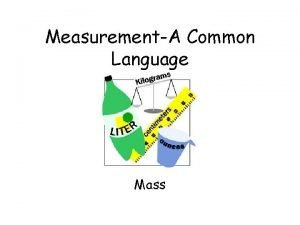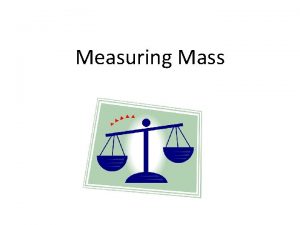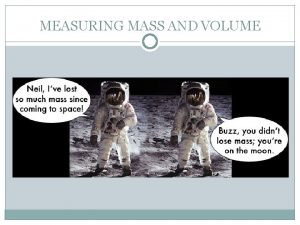Engineering Science N 2 Chapter 1 Dynamics MASS














































- Slides: 46

Engineering Science N 2

Chapter 1: Dynamics MASS AND WEIGHT Mass (measured in kilograms) is the amount of matter a body contains while weight (measured in newtons) is the gravitational force acting on a body. www. futuremanagers. com

Chapter 1: Dynamics (continued) DISTANCE AND DISPLACEMENT Distance is the distance covered, regardless of direction and displacement is the straight line distance that a body moves. www. futuremanagers. com

Chapter 1: Dynamics (continued) SPEED AND VELOCITY Speed is the rate of change of distance and velocity is speed in a given direction or the rate of change of displacement. www. futuremanagers. com

Chapter 1: Dynamics (continued) CONSTANT VELOCITY When a body moves at a constant velocity, it is often useful to represent the relationship between the displacement and time graphically. www. futuremanagers. com

Chapter 1: Dynamics (continued) ACCELERATION When the velocity of a body increases, it is said to be accelerating, thus acceleration is the rate of change of velocity. www. futuremanagers. com

Chapter 2: Statics REVISION OF FORCES AS VECTORS A force possesses both magnitude and direction and is therefore a vector quantity. In order to represent a force fully, its point of application must be included in the vector or its nature must be stated. Therefore, in order to represent a force fully, the following must be indicated: • Magnitude; • Direction; and • Point of application or nature. www. futuremanagers. com

Chapter 2: Statics (continued) PARALLELOGRAM OF FORCES If two similar forces acting on a point are represented as vectors by two adjacent sides of a parallelogram, their resultant will be represented in magnitude and direction by the diagonal of the parallelogram drawn from that point. www. futuremanagers. com

Chapter 2: Statics (continued) COMPONENTS OF A FORCES When two or more forces can replace a single force and still have the same effect as that single force, they are termed components of that force. www. futuremanagers. com

Chapter 2: Statics (continued) MOMENTS The moment of a force is the turning effect of a force about a point. A spanner tightening a nut is an example of this. www. futuremanagers. com

Chapter 2: Statics (continued) BEAMS When a horizontal beam, resting on supports, is in equilibrium when acted upon by vertical forces, then; • Sum of clockwise moments = sum of anticlockwise moments about the same point, and; • Sum of upward forces = sum of downward forces. www. futuremanagers. com

Chapter 2: Statics (continued) A COUPLE A couple is two equal parallel forces acting in opposite directions, but not opposite each other. Tightening a wingnut or closing a tap with two fingers is probably the most common examples of a couple. www. futuremanagers. com

Chapter 3: Energy and momentum ENERGY Energy is the capacity to do work. Energy is measured in joules. Energy occurs in many forms such as thermal (or heat), chemical, electrical, potential, kinetic, magnetic and atomic energy. www. futuremanagers. com

Chapter 3: Energy and momentum (continued) POTENTIAL ENERGY (PE) Potential energy is the energy a body possesses by virtue of its “position” or “state of strain”. www. futuremanagers. com

Chapter 3: Energy and momentum (continued) KINETIC ENERGY (KE) Kinetic energy is the energy that a body possesses by virtue of its motion. www. futuremanagers. com

Chapter 3: Energy and momentum (continued) CONSERVATION OF ENERGY The law of the conservation of energy states that energy cannot be created or destroyed, but it can be changed from one form to another. www. futuremanagers. com

Chapter 3: Energy and momentum (continued) www. futuremanagers. com

Chapter 3: Energy and momentum (continued) ANGULAR MOMENTUM Linear momentum is proportional to the mass and velocity (in a straight line) of the body. When considering a rotating disc, the momentum is also proportional to the mass and the angular velocity of the body. www. futuremanagers. com

Chapter 4: Work, power and efficiency www. futuremanagers. com

Chapter 4: Work, power and efficiency (continued) www. futuremanagers. com

Chapter 4: Work, power and efficiency (continued) FORCE/DISTANCE GRAPHS Work done may also be determined graphically by making use of a work diagram. The distance moved is plotted on the x-axis of a graph and the effective force on the y-axis. The enclosed area will represent the work done. www. futuremanagers. com

Chapter 4: Work, power and efficiency (continued) WORK DONE ON A HORIZONTAL SURFACE The force required to move a body across a horizontal surface at a constant velocity, is that force required to overcome friction and wind resistance. www. futuremanagers. com

Chapter 4: Work, power and efficiency (continued) www. futuremanagers. com

Chapter 4: Work, power and efficiency (continued) WORK DONE ON AN INCLINED PLANE When the body considered moves up an inclined plane, a third resistive component appears; the resistance due to gravity. www. futuremanagers. com

Chapter 4: Work, power and efficiency (continued) www. futuremanagers. com

Chapter 5: Mechanical drives and lifting machines BELT DRIVES Belt drives are used to transmit rotary motion and power from one shaft to a other. They can also be used to alter the axis of rotation of shafts, to change the speed or direction of rotation of a shaft or to act as force amplifiers. www. futuremanagers. com

Chapter 5: Mechanical drives and lifting machines (continued) CHAIN DRIVES The most common example of a chain drive is the chain used on a bicycle. www. futuremanagers. com

Chapter 5: Mechanical drives and lifting machines (continued) GEAR DRIVES Gear wheels are used to transmit rotary motion and power from one shaft to a parallel shaft in close proximity. They can also act as force amplifiers. www. futuremanagers. com

Chapter 5: Mechanical drives and lifting machines (continued) LIFTING MACHINES Lifting machines are mechanical devices designed to make work easier. These machines make it possible for a load larger than the applied effort, to be raised. www. futuremanagers. com

Chapter 5: Mechanical drives and lifting machines (continued) WHEEL AND DIFFERENTIAL AXLE The differential wheel and axle and simple differential winch are similar in operation and the same equations may be used for both, provided the diameter of the circle through which the effort of the differential winch moves, is considered. www. futuremanagers. com

Chapter 5: Mechanical drives and lifting machines (continued) DIFFERENTIAL PULLEY BLOCK A pulley block, which has a pulley with two diameters and slots into which a chain fits, is coupled to the snatch-block, which also has a pulley with slots, by means of an endless chain. www. futuremanagers. com

Chapter 5: Mechanical drives and lifting machines (continued) HYRDRAULICS A quantity of gas adjusts its volume and its shape to a vessel. A quantity of liquid will adjust its shape to the lower portion of a vessel, but it does not change its volume. Pressure is the force exerted on a surface per unit area. According to Pascal’s law, a confined fluid transmits externally applied pressure uniformly in all directions. www. futuremanagers. com

Chapter 6: Friction FRICTION When two surfaces are in contact and movement takes place, or tends to take place, a force appears which resists motion. This force is known as the force of friction. www. futuremanagers. com

Chapter 6: Friction (continued) FRICTION ON AN INCLINED PLANE The angle of friction is the largest angle to the horizontal that one body will rest on another before it starts sliding. www. futuremanagers. com

Chapter 7: Heat HEAT AND TEMPERATURE Heat is a form of energy and temperature is an indication of the degree of hotness or coldness of a body. www. futuremanagers. com

Chapter 7: Heat (continued) SPECIFIC HEAT CAPACITY Specific heat capacity is the amount of heat energy required to raise the temperature of 1 kg of a substance 1 °C (or 1 K). www. futuremanagers. com

Chapter 7: Heat (continued) CONSERVATION OF HEAT When a hot substance is mixed or brought into contact with a cooler one, heat is transferred from the hotter substance to the cooler one until their temperatures are equal. This is referred to as the Principle of Conservation of Heat. www. futuremanagers. com

Chapter 7: Heat (continued) THERMAL EXPANSION The volume of most substances increases when their temperature is increased. In engineering, the increase in volume of a liquid or gas is of most importance. In the case of solids, the increase in area and length is of most importance. When a substance is cooled, the reverse takes place. www. futuremanagers. com

Chapter 7: Heat (continued) HEAT VALUE The calorific value of fuel is the quantity of heat released per unit quantity of fuel (a substance which is burned in order to release heat energy) completely burned. www. futuremanagers. com

Chapter 7: Heat (continued) STEAM Steam has many advantages and outstanding qualities. It is produced from water, which is plentiful in most areas and relatively cheap to obtain. Both water and steam are clean to use. Steam has a very high heat content and can store large quantities of heat energy, which can, in turn, be converted into useful work. It can also be condensed and used over and over again. www. futuremanagers. com

Chapter 8: Particle structure of matter PARTICLE STRUCTURE Familiar examples of matter are water, air, copper, tin, smoke, iron and salt. All matter is made up of extremely small particles called molecules. www. futuremanagers. com

Chapter 8: Particle structure of matter (continued) ATOMS An atom is the smallest part of an element that has all the characteristics of that element. Atoms are made up of electrons, neutrons and protons. www. futuremanagers. com

Chapter 8: Particle structure of matter (continued) ELECTROLYTES An electrolyte is a solution able to conduct electric current. Electrolytes can be used: • In cells (batteries); and • In electroplating and electro-refining processes. www. futuremanagers. com

Chapter 9: Electricity GROUPING OF RESISTORS • Resistors in series: www. futuremanagers. com • Resistors in parallel:

Chapter 9: Electricity (continued) www. futuremanagers. com

Chapter 9: Electricity (continued) ELECTROMAGNETIC INDUCTION • Dynamically-induced emf is the generation of an emf by the relative motion between a magnetic flux and an electric circuit. • Mutual induction is the generation of an emf in one circuit by varying the current in another circuit. • Self-induced emf is the generation of an emf in a circuit by varying the current in that same circuit. www. futuremanagers. com
 Engineering mechanics: dynamics chapter 4
Engineering mechanics: dynamics chapter 4 A crane
A crane Whats your favorite subject
Whats your favorite subject Force engineering science
Force engineering science Define derived quantities
Define derived quantities Motion means
Motion means Program evolution dynamics in software engineering
Program evolution dynamics in software engineering Hibbeler
Hibbeler Mechanics
Mechanics Russell
Russell Mass to mass formula
Mass to mass formula Isotopic mass formula
Isotopic mass formula Relative formula mass of hcl
Relative formula mass of hcl How to find mass percent
How to find mass percent Inertial mass vs gravitational mass
Inertial mass vs gravitational mass Grams to.moles
Grams to.moles How to convert grams to mole
How to convert grams to mole Molar mass units
Molar mass units How to convert grams to moles
How to convert grams to moles What are the units of molar mass
What are the units of molar mass Mass/mass problems
Mass/mass problems Distinguish between mass number and atomic mass.
Distinguish between mass number and atomic mass. Gravitational mass vs inertial mass
Gravitational mass vs inertial mass Formula mass vs molecular mass
Formula mass vs molecular mass Formula mass vs molecular mass
Formula mass vs molecular mass What is atomicity
What is atomicity Formula mass vs molar mass
Formula mass vs molar mass The percent by mass is the ratio of the solute's
The percent by mass is the ratio of the solute's Inertial mass vs gravitational mass
Inertial mass vs gravitational mass Co2 relative molecular mass
Co2 relative molecular mass Mass of oxygen
Mass of oxygen Atomic mass vs molar mass
Atomic mass vs molar mass Stoichiometry worksheet #2 (mole-mass mass-mole problems)
Stoichiometry worksheet #2 (mole-mass mass-mole problems) N n avogadro
N n avogadro A rocket of mass 12000 kg accelerates vertically
A rocket of mass 12000 kg accelerates vertically Mass mole
Mass mole Formula mass vs gram formula mass
Formula mass vs gram formula mass Cold air mass overtakes warm air mass
Cold air mass overtakes warm air mass Mass spectrometry in forensic science
Mass spectrometry in forensic science Chemistry: the central science chapter 14 answers
Chemistry: the central science chapter 14 answers What is system design in software engineering
What is system design in software engineering Forward engineering and reverse engineering
Forward engineering and reverse engineering Principles of complex systems for systems engineering
Principles of complex systems for systems engineering Elegant systems
Elegant systems Forward and reverse engineering
Forward and reverse engineering Whats a density independent factor
Whats a density independent factor Cultural dynamics in assessing global markets
Cultural dynamics in assessing global markets
